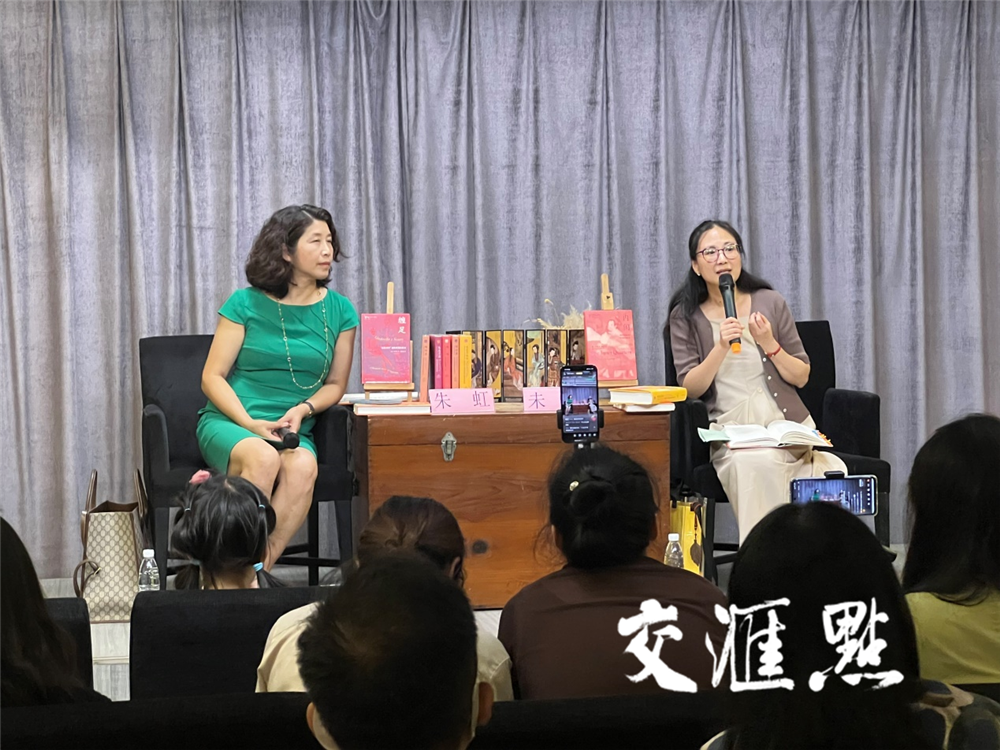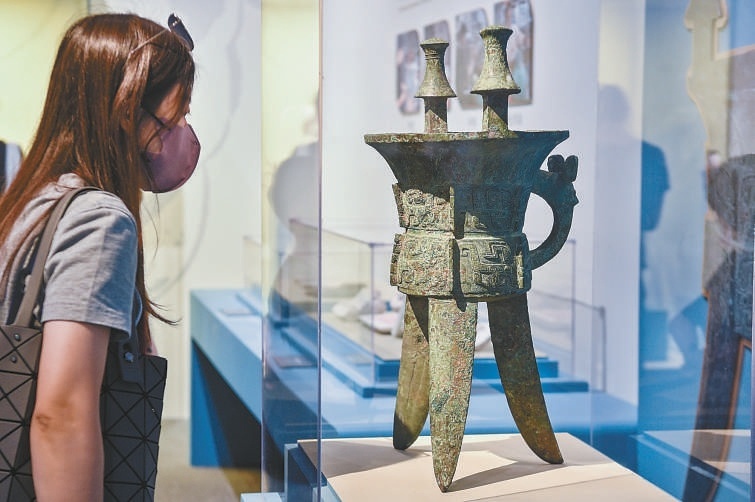Zhang Duqin, a researcher at the Wuhan Academy of Social Sciences: Protecting the Jingchu culture, attaches great importance to the Han River Culture | Understand China along the Yangtze River -Hubei Qianli Yangtze River Bank
Author:Changjiang Daily Time:2022.08.10
The Yangtze River Daily Da Wuhan Client August 10th (Reporter Yu Tantan) "The Yangtze River Culture is a romantic culture, which is composed of the culture of the Yangtze River Basin. The manifestation of culture in the Hubei area. It cannot be understood that only one river on both sides of the river is the Yangtze River culture, let alone the culture of the Yangtze River with the word "Yangtze River". To build the Hubei section of the Yangtze River National Cultural Park, it is necessary Inheritance and highlight the Jingchu culture, include the implementation plan that I wanted to do, and incorporate the supplementary supplement that I had never thought of before. "On the afternoon of August 8th," read the Yangtze River to understand China -understand China -follow the Yangtze River -understand China - At the second seminar of Hubei Qianli Yangtze River Bank "at the Xiangyang Metropolitan Circle Seminar," understand China -Hubei Qianli Yangtze River Bank "Xiangyang Metropolitan Circle Invision Group special experts, researcher Wuhan Social Sciences, historical history The former director Zhang Duqin pointed out.

Zhang Duqin, a researcher at Wuhan Academy of Social Sciences and former Director of History. Photo by Li Ziyun, a reporter from the Yangtze River Daily
Pay attention to Hanjiang culture
Zhang Duqin said that the Hanjiang River is the largest tributary of the Yangtze River. The Han River culture is an important part of the Yangtze River culture and the bridge between the Yangtze River culture and the Yellow River culture. "The three thousand miles of the Hanjiang River, two -thirds of the winding in Hubei, and a source of life in Hubei with the Wanli Yangtze River. The nourishment of the nourishment of the Han River and northern Jianghan Plain, accounting for about one -third of the land area of Hubei; The cities supported by the Hanjiang Water system are almost half of the city of Hubei. "
Zhang Duqin particularly emphasized that the essence of the historical and cultural cities of Hubei Province, such as Wuhan, Zhongxiang, Suizhou, Xiangyang, which is included in the "World Heritage List", all of which are in the Hanjiang River Basin. National key cultural relics protection units in Hubei Province, such as Wudang Mountain Golden Hall, Xiangyang City Wall, etc., and national key scenic spots, such as Wudang Mountain, Dahongshan, Gulongzhong, and Shennongjia National Park, are in the Hanjiang River Basin.
"As for the historical and cultural celebrities in Hubei, the former Ming Dynasty was strong or guests in the Jianghan Plain and its surroundings. The ancient human sites of Huanglongdong in Xixian County and the ancient human sites of Qingqu Town, Qixian County appeared on both sides of the Hanjiang River. Coupled with the discovery of ancient human sites in Longgang District, Hanzhong City, Shaanxi, and ancient human sites in Lijia Village, Chengguan Town, Xixiang County, it fully showed that the coast of Hanjiang was the birthplace and activity corridor of ancient humans. "Studying the Yangtze River culture cannot ignore the Hanjiang culture; protecting the Yangtze River culture must protect the Hanjiang culture."
Incorporate the focus of the Hanjiang River Basin
Zhang Duqin said that the purpose of building the Yangtze River National Cultural Park is to integrate cultural relics and cultural resources with outstanding significance, important influence, and major theme through the construction of cultural parks. The functions of entertainment and scientific research are integrated to concentrate on creating an important symbol of Chinese culture.
He said that in the Hubei section of the Yangtze River National Cultural Park, in addition to making full use of the historical and cultural resources of the Yangtze River coastal cities such as Yichang, Jingzhou, Wuhan and Ezhou, and Huanggang, the cultural resources of the Hanjiang River Basin should be included in key plans.
To this end, Zhang Duqin put forward the following suggestions: build the Hanjiang cultural belt with four national historical and cultural cities with Xiangyang, Suizhou, Zhongxiang, and Wuhan as the node; Cultivate Xiangyang City, Suizhou, Jingmen City, Xiaogan City, Tianmen City, Qianjiang City, Xiantao City, and Jingchu Cultural Cultural Cultural Cultural Cultural Cultural Cultural Cultural Cultural Culture; National Museum.
【Edit: Yao Hao】
For more exciting content, please download the "Da Wuhan" client in the major application markets.
- END -
Women who are reading are good?This set of books focused on Chinese women over thousands of years

The intersection news is written for 1,000 years of Chinese women's brief history,...
Guobo held a century -old cultural relics protection achievement exhibition

The audience was visiting the carefully restored Si (kǎo) mother (jiǎ).The caref...